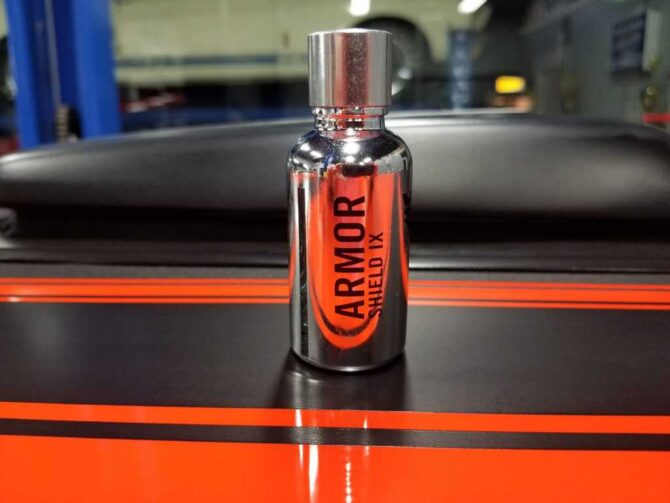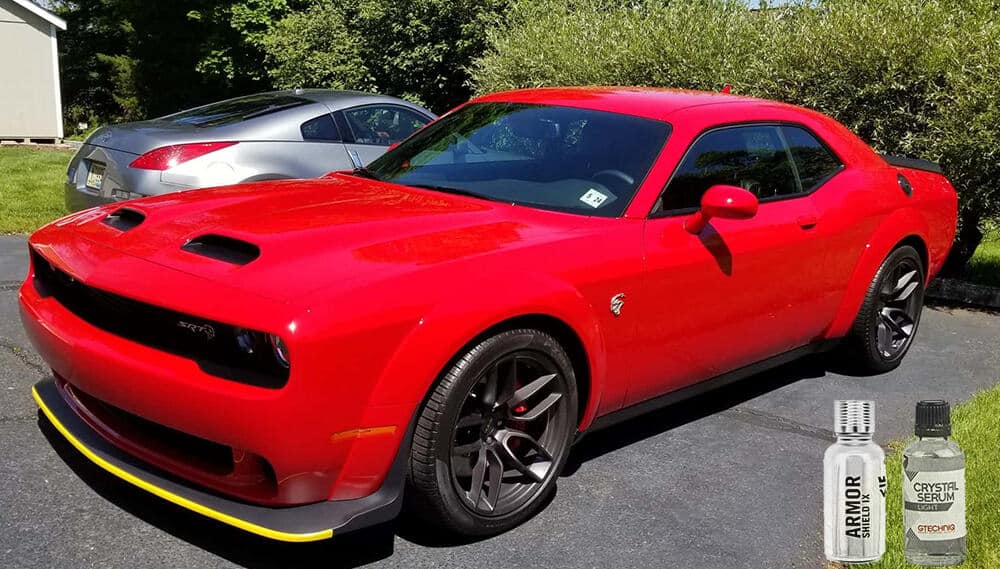The automotive enthusiast is making a comeback. It seems everywhere you look, there is a new blogger or dude on YouTube that is proud of the enhancements they’ve made to their daily driver. A growing trend on social media is a car owner outlining the best ways of protecting their vehicles – specifically comparing paint protection film vs ceramic coatings.
Keeping your ride free from surface damage, scratches, swirl marks, and more are improved by using either of these two bitchin paint protection products. In fact, whether you choose a DIY ceramic coating or PPF, you simply can’t go wrong. Each product does a phenomenal job of reducing trips to the car wash and acts as a great sealant to block UV rays, chemicals, and acids left from bird shit and splattered bug guts.
That being said, it’s important to compare these two competitors for your car care dollar. So – let’s take some time to review the similarities, differences, and provide a few practical examples where using one or the other is the best option.
What Are the Similarities Between Ceramic Coatings and Paint Protection Films?
Everybody focuses on our differences in today’s society. So, let’s break that hateful trend and talk about what unites us. Lol – just kidding.
But seriously, surprisingly, there are several ways that ceramic coatings and PPF are similar. Here is a brief list of attributes and features that PPF and nano-coatings both provide consumers.
They are both better options than paint sealant products. And they both protect gloss or matte paint surfaces.
So, let’s clarify something first. There are products called paint sealants, that are essentially synthetically engineered car wax and polish blends on acid. What I’m talking about is the ability to seal in the paint and clear coating, so that the vehicle surface itself is protected.
Both car paint protection film and Ceramic Coatings are better than car waxes and synthetic paint sealants – this is something we can all agree on.
What do PPF and Ceramic Coatings Protect Against?

Car, truck, and SUV owners typically purchase both of these products for one, primary purpose – protection. They both accomplish this task by laying a small, completely transparent, and quite a durable layer of protection that bonds onto the clear coating, fiberglass, carbon fiber, headlights, even vehicle wheels.
One the average, both products do an amazing job protecting a vehicle from exposure to damaging UV rays, chemical degreasers, tree sap, road grime, bird droppings, bug splatters, and automotive contaminants. They also both have very good hydrophobic properties, which means they protect the surface area from contaminants found in water.
One specific item that they both protect against, and many car owners overlook, is the dust that comes off brakes as they wear.

This is called silicon carbide, which is the material that helps to provide the hardness that brake pads possess. It’s an ingredient in both synthetic and semi-metallic brake pads. There are also microscopic levels of this ingredient in other brake pad materials. As the brake pad wears, this dust is sent from the pad to the brake rotors, wheels, and yes – the paint surface.
The main problem occurs when the vehicle is washed. If these microscopic particles are on the bare paint or clear coating, it can scratch the surface. By using the PPF or ceramic coating, it’s less likely for brake dust to stick – and if it does, it will not penetrate the protective layer.
How Long do Ceramic Coating and PPF Last?

On average, Nano Ceramic Coatings and PPF will protect the protected surface for at least two years. There are some higher-quality Nano coating products that can protect for up to 5 years and some really good PPF’s that have been known to last nearly a decade.
However, the key to the longevity of both products is making sure the applied surface has been prepped correctly. In most instances, the professional detailer will recommend having paint correction completed if there are any swirl marks, scratches, faded paint or other issues exist. Whether paint correction is needed or not, completing the recommended prep work for both products is crucial.
What Are the Differences Between Ceramic Coatings and Paint Protection Films?
While we wanted to live in harmony, no bromance lives forever. Truth is – while DIY Nano Coatings and automotive paint protection film have several similarities, there are multiple ways they are different. Let’s take a look at a few of them.
What are the Cost Differences Between PPF and Ceramic Coatings?
So, this is a trick question. With both products, consumers can opt for a professional to apply them or choose DIY variants. This means that there are multiple price differences based on the type or quality of the product you’re purchasing.
I think even PPF installers will agree that the difference between professional-grade PPF products and DIY products is night-and-day. There are some DIY Clear Bra products and other PPF brands that vehicle owners can purchase online and apply themselves. Depending on the amount of PPF you purchase, and the type of vehicle, a DIY PPF can cost anywhere from $100 to $500 for the materials alone.
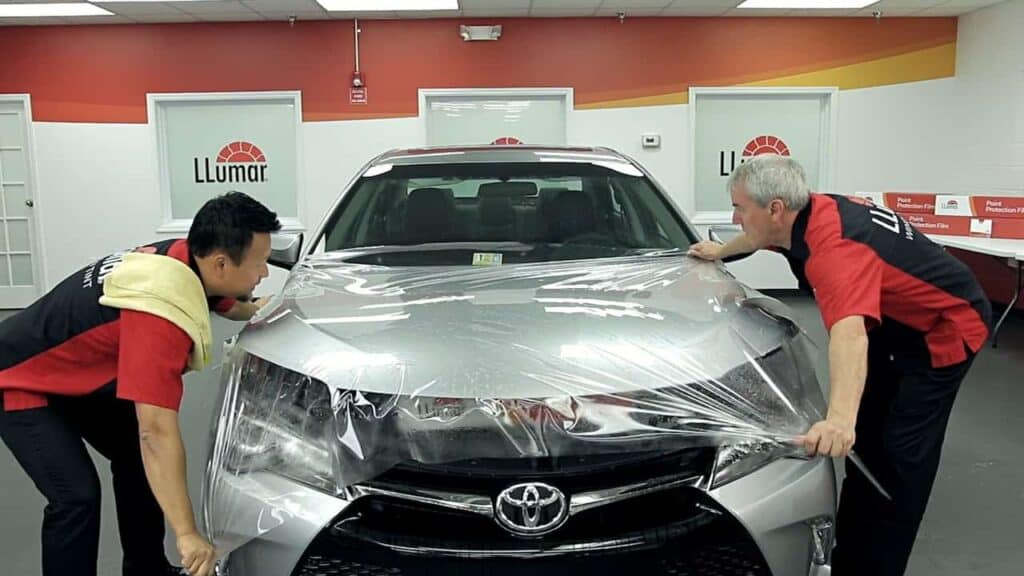
The professionally applied PPF also depends mainly on the amount of surface area you’re protecting. Most car owners will have the entire front end (including bumpers, fenders, and hood) along with side-view mirrors protected with a PPF professional installation. Depending on the PPF brand used, and the certified installer, the pricing can range from $1,000 to $2,000.
For those who wish to PPF their entire vehicle, the cost can approach $6,000 in some cases.
Ceramic Coating consumers have similar decisions to make. They can opt for a professional detailer or certified ceramic pro installation company do the job – or do it themselves. DIY ceramic coating products are usually sold in 30ml or 50ml bottles (which will cover an average-sized two-door coupe). These bottles are usually packaged with a DIY installation kit, that may include a few or all of the materials you need to correctly apply them.
The cost for DIY ceramic coating kits can range from $70 to $100 per kit. Depending on the size of the vehicle, you may require up to 3 or more kits.

The professional coating costs are quite different. They are usually based on the level of protection or years of warranty you want for the vehicle. For example, a standard three-year warranty package can run from $1,000 to $2,000 depending on the product used and the company installing them. A five-year warranty can cost up to $3,000. There are even “Lifetime” warranties with some professionally installed ceramic coatings.
What is the Difference in Maintenance Needs Between PPF and Ceramic Coating?
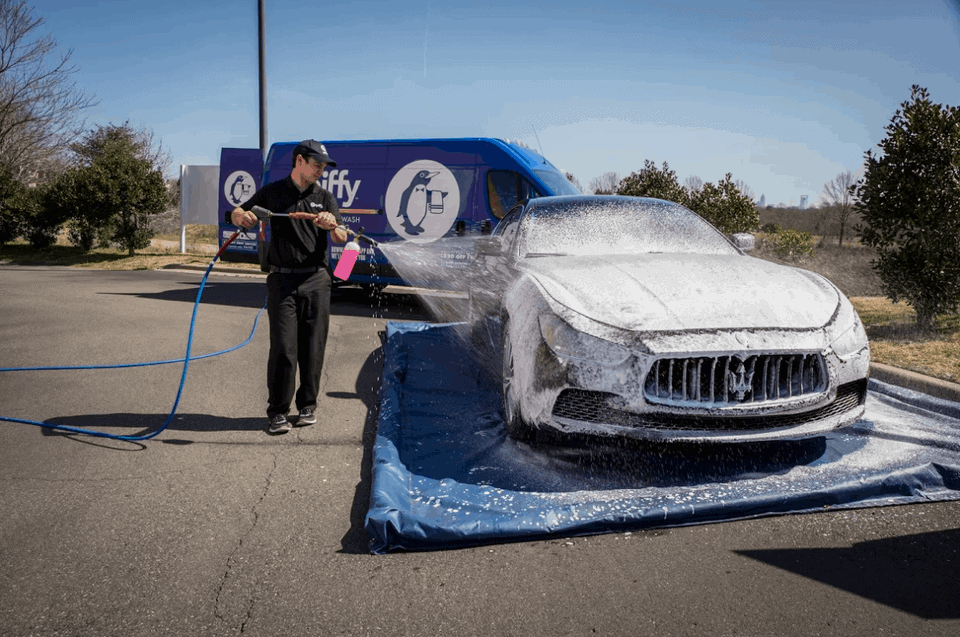
Sometimes it’s best to go directly to the source to find out facts. That’s what I did with regard to PPF maintenance needs because simply put – many of them are different.
According to one major brand of PPF’s, their maintenance checklist indicates that freshly applied PPF’s products should:
- Wait 48 hours after installation before you wash your car.
- Remove any stains from the vehicle as soon as you notice them.
- Seal using the (INSERT BRAND NAME HERE) Paint Protection Film Sealant once every three months to preserve the gloss.
- Any small scratches that you notice on the film are able to heal within a half-hour in room temperature weather but may need to be accelerated by using warm water on the affected areas.
- Use only microfiber or terry cloths on the film.
- Do not use any abrasive cleaners on the film.
- Do not scrub or wipe the film if it is in direct sunlight.
- Do not use car waxes with dyes in them.
However, other PPF brands only recommend washing the vehicle every few weeks (using the two-bucket method), not using abrasive cleaners or car wax / polish products. Surprisingly, some PPF installers recommend applying a high-quality ceramic coating on top of the PPF for added protection.
The important thing to remember here is that there is no such thing as a GENERAL PPF MAINTENANCE GUIDELINE. ALWAYS follow the specific directions of the manufacturer or brand of PPF you choose for optimal results.
The same thing applies to ceramic coatings. Most professional-grade ceramic coatings applied by certified installers require some level of aftercare in order to honor warranties.
Generally speaking, the maintenance for ceramic coatings, especially the DIY variants, includes washing the vehicle yourself or by a professional detailer, using the recommended and trusty two-bucket method.
That’s about it.
Benefits of Using a Ceramic Coating
If you’re thinking about having a ceramic coating installed, or doing it yourself, there are some benefits that you should consider.
For the ceramic pro applied stuff, some of the benefits include:
- They’ll do everything for you – including the paint correction (if needed) and all the prep work.
- They are offered with warranties (from 3 to lifetime)
- They are exceptional at repelling water (this applies to the DIY versions too BTW)
- They keep your car cleaner – longer. This is also due to the amazing hydrophobic surface properties which cut down on water spots and dirt build-up
If the DIY option is more your style, a few of the benefits of these products include:
- The satisfaction of doing a job that cost others a few thousand dollars in a few hours yourself
- Similar protection levels as the pro-grade stuff, at a fraction of the cost
- Protection from 2 to 5 years with some of the higher-quality DIY ceramic coating kits
- Easy to maintain and no BS warranties that are very expensive and time consuming to follow
What is a Nano Ceramic Coating?

You’ve likely heard the term NANO Ceramic Coating and are confused about whether they are different from an automotive ceramic coating. Well, the nano refers to the technology used that bonds to the surface. It’s nanotechnology, like Iron Man’s suit in Avengers Infinity War and Endgame for example.
All automotive ceramic coatings are nano-based, so basically, it’s a different phrase used to describe similar products. Now, something that should be clarified is there is a difference between concentrated ceramic coatings and ceramic spray wax.
These new products are sold in a spray bottle, and use ‘watered-down’ spray wax, polish, with small percentages of ceramic materials. They do a great job of providing hydrophobic properties but last for less than a year in most cases.
How Long Does Ceramic Coating Take to Cure?
A good ceramic coating will initially flash or bond to the surface in a matter of minutes. The major determining factor of how quickly they flash is based on three variables; the SiO2 percentage, the heat, and humidity of the applied area.
Generally speaking, when the Silica Dioxide or Quartz percentage is higher (like above 90%) the product can cure very quickly. This narrows the application window, which is why it’s best left to professionals in environmentally controlled environments.
The other factors include heat and humidity. The happy spot for applying ceramic coatings in indoors, with an outside temperature around 70 degrees and low humidity levels. Once the product flashes, it generally takes about 24 to 48 hours to cure.
How Easy is Ceramic Coating to Apply?

To be honest, this is another ‘trick question’. Ease of application really depends on your skill and ability with automotive car care products and techniques. This video above will explain how the process is completed, so you can determine for yourself if it’s something you feel comfortable completing – or letting a pro handle the job.
Benefits of Using Paint Protection Films
I believe that PPF or thermoplastic urethane is the best product for a consumer to use if they are looking to reduce the potential of rock chips or damage caused by flying road debris. Not only will PPF’s accomplish this, but if they are lightly scratched due to impact, they can ‘self-heal’ rather easily. Let’s explore a few of the other benefits of using a paint protection film on your car.
How Long Does Paint Protection Film Last?
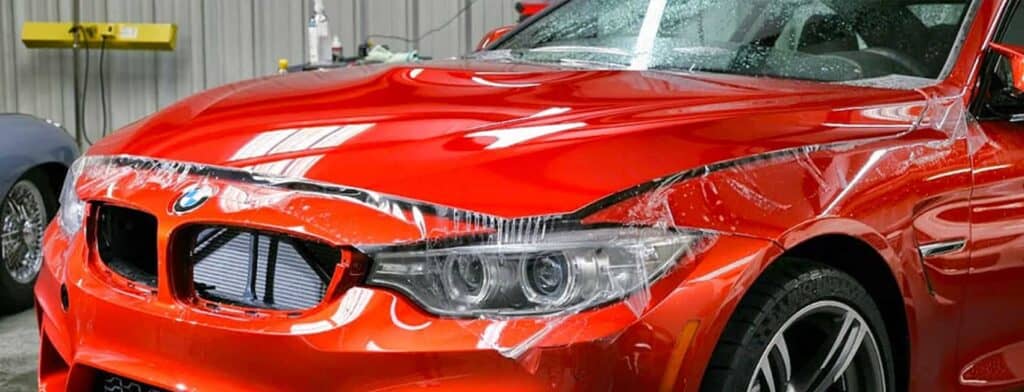
The average PPF will last from 3 to 5 years (when applied by a certified installer). The primary factors that impact PPF longevity include the quality of the product, the prep work completed, and of course, the way in which the PPF was applied. Professionals are highly trained with advanced techniques and use specialty equipment to correctly apply PPF’s. There are some products that can last up to 10 years.
How Easy is Paint Protection Film to Apply?
Not very. PPF is a very thin material, that is much more complex to apply than vinyl wraps for example. With vinyl, the process is simple. However, PPF is a completely different process, that requires the use of special lubricants and techniques. I’d leave it to a professional myself, and I’ve installed about 30 vinyl wraps on drag racing vehicles over the years.
How Well do Paint Protection Films Work?
In short, they are quite beneficial when it comes to the protection part. That’s their job – to provide a thin layer of film on top of a surface to reduce exposure to UV rays, dirt, debris, and scratches.
However, that being said, they aren’t perfect. If you’re looking to get the best bang for your automotive paint protection – consider adding a ceramic coating on top of the PPF – to improve the one area they are not as good – which is hydrophobic and self-cleaning abilities.
Wrapping it Up

You’re probably thinking – OK TIM, what’s the f-ing verdict!?!?! Well, that’s up to you to determine. When comparing ceramic coating vs paint protection film, it’s hard to choose a clear-cut winner. It really depends on what is important to you with a paint protection product. If you’re going for ZERO rock chips and want to keep your existing paint in factory condition – the best option is likely the PPF.
However, if you want to protect the surface from contaminants, improve the hydrophobic properties, keep the vehicle cleaner, and want an easier DIY solution – a product like Armor Shield IX is right up your alley.
Like I mentioned above, if money was no option for me, I’d wrap my 2020 Toyota GR Supra (seriously, that thing is BADASS and I want one – if anyone is looking for like an awesome end of the year bonus gift or something for me…) with a PPF and apply the whole thing, including the windshield, carbon-fiber wing, and wheels, with Armor Shield IX.
That would make a pretty epic YouTube Video – huh?
Regardless of which option you choose, or if you opt for both, the key is to always go directly to the horse’s mouth. If you’ve got questions about their products, freaking speak-up or forever hold your peace. It’s a buyer beware market out there, and those that just assume that the products they are buying are ‘good’ cause somebody said so may fall victim to purchasing a shady product.










